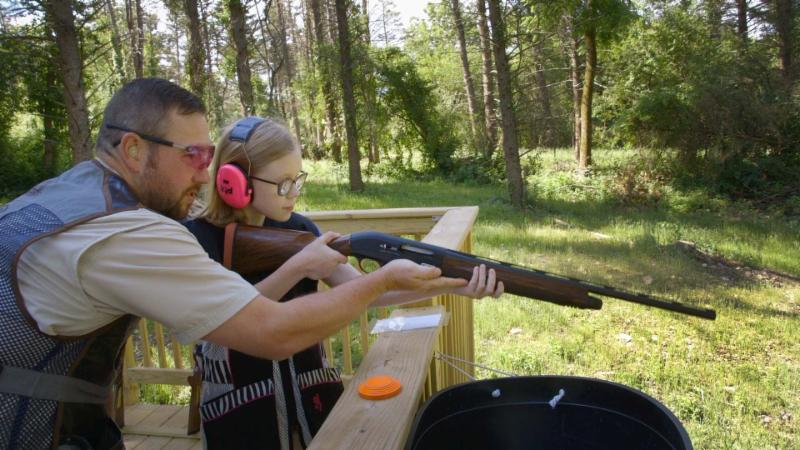McGraw Alum Leads Coyote
Project in L.A.
By Shane McKenzie/McGraw
McGraw photo
For more than 50 years, wildlife conservation and research have been among the core values of the Max McGraw Wildlife Foundation. More than 100 studies related to wildlife conservation have been completed under the Foundation's auspices, and even more scientists have been involved with them.
Their work has been documented in numerous papers, journals, articles, and other publications and as tribute to this great work, we would like to spotlight those involved, and to catch up with those who have moved on to other projects.
Dr. Stanley Gehrt, our director of Wildlife Research, has been a mentor to many - notably the associate research scientists who have managed the work of McGraw's Urban Coyote Project.
Of these, one of the longest-serving is Justin Brown, who worked at McGraw from 2003 until 2010. Today, he is a wildlife research biologist for the National Park Service and the founder of the Los Angeles Urban Coyote Project, using the lessons he learned at McGraw to track coyotes in another American metropolis.
|
|

Congratulations to McGraw's Cody Matson
McGraw photo by Alex Garcia
Clay Target Manager Cody Matson has become the first member of McGraw's team to earn Level II Instructor status with the National Sporting Clays Association.
As a Level II Instructor, Cody is qualified to teach wing shooting and to coach shooters as they continue to improve. Level II prerequisites include several years as a Level I instructor and a minimum of 500 hours of teaching. Cody also has continued to improve his own shooting with lessons from 2016 World Champion Anthony Matarese Jr. (designer of our newly renovated sporting clays course) and other top instructors.
"I'm very excited to coach our members and build their confidence in his or her own shooting abilities," Cody said.
"Cody is not only a fine Level II Instructor but is also a great ambassador for (McGraw)," said Don Currie, chief instructor of the National Sporting Clays Association and the instructor for Cody's certification class.
McGraw members can benefit from Cody's expertise by booking a lesson at the sporting clays course, the 5-stand or Randy's Range. It's a perfect way to learn how to hit a problem target or to tune up for the upcoming hunting season.
For more about shooting instruction at McGraw, click here.
|
Why Don't Whales Just Get Out of the Way?
By Amorina Kingdon/Hakai
Photo by Richard Towell/flickr
When eight endangered North Atlantic right whales turned up dead in the ocean off Nova Scotia this past June, scientists scrambled to find out why. Early data shows several of the whales had blunt force trauma consistent with a ship strike, with data still pending on others.
Ship strikes are a major cause of injury or death for whales. But why do they happen at all? The ocean is vast, and huge ships don't exactly travel at freeway speeds-there should be enough noise, movement, and warning for a whale to get out of the way, right? Why whales may remain in dangerous proximity to ships is tough to study, but over the years, some clues have begun to emerge.
One reason is that whales may not know ships are dangerous. After all, as the biggest animals in the ocean, whales may not understand that there are things in the ocean larger and more powerful than they are.
"It's not something they're evolved to deal with," says John Calambokidis, a research biologist at Cascadia Research Collective in Washington State. "It's also something there's very little opportunity to learn from. It's not like you can get struck two or three times and then you know you should avoid them."
|

The Five States that Spend the Most on the Outdoors
By Jill Sanford/Outside
Photo by California Department of Fish and Wildlife/flickr
The Outdoor Industry Association
says
that outdoor recreation in the United States is worth $887 billion and responsible for 7.6 million American jobs. Now the trade group has released individual reports that break down those numbers by state, with some surprising revelations.
Each state report reveals the impact of outdoor recreation on consumer spending, state and local tax revenue, and employment. This updates data released in 2012 and now includes 70 percent survey data, conducted by Southwick Associates, a market research, statistics, and economics firm. The 2017 reports also factor in more types of activities, like mountaineering and surfing. One big takeaway is that outdoor spending is on the rise throughout the country. And the industry's influence is also on the rise-in Texas, for example, more direct jobs depend on outdoor recreation (411,000) than on the oil and gas industry (212,000).
"This latest study reiterates what an important economic driver the outdoor industry is for every state in our nation," says Matt Powell, sports industry analyst at the NPD Group.
|

The Beauty and Biology Behind Egg Pigmentation
By Pat Leonard/Living Bird
Photo by gardener41/flickr
Fish do it. Frogs do it. Even insects lay eggs with color. But birds do it best.
Only birds produce eggs in such a wide range of eye-pleasing shades and intricate patterns on the hard surface of their eggs.
Like gems in a jeweler's window, they vary in base color, how shiny they are, and whether they are covered in Sanskrit-like scrawls or patterns of spots.
But, how does the color get there? What is it made of? Does it benefit the embryo?
And, why are some eggs plain white?
Egg pigmentation is surprisingly complex.
|
|
|
|
|
|